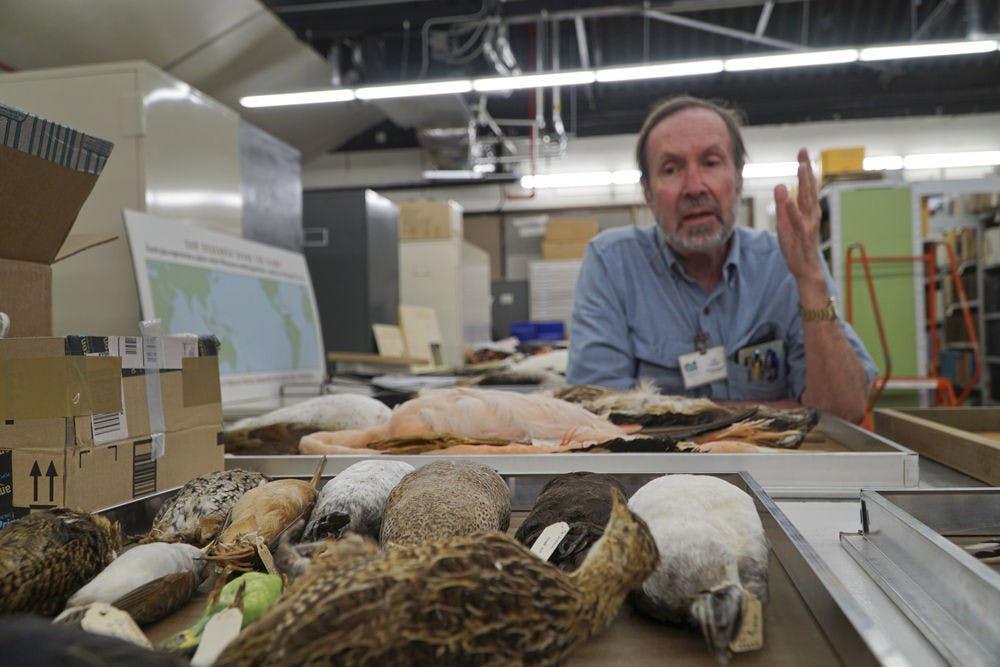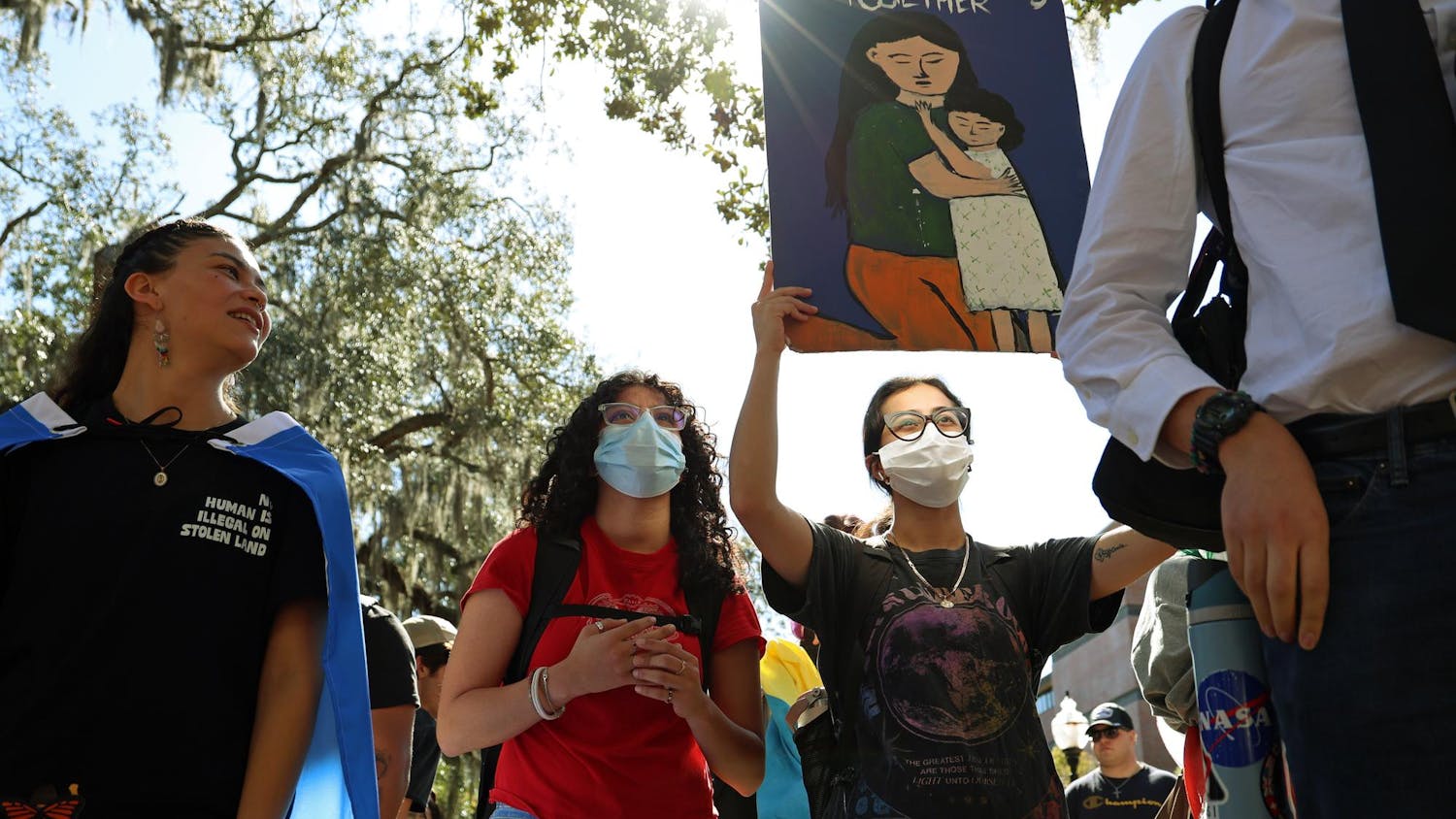Down a narrow passageway in Dickinson Hall, the thick vertebras of a baleen whale sit beside its 6-foot-long skull. In another room, about 33,000 bird specimens and field notes nestle together in drawers.
In total, more than 3 million animal and plant specimens reside in the hall, home to the Florida Museum of Natural History’s vast collection of documented life.
In an effort to help transfer the collection into a database, the museum partnered with the Smithsonian Institution and about 20 other museums over the weekend as part of Worldwide Engagement for Digitizing Biocollections, a four-day global effort created by the Florida Museum, said Rob Guralnick, the curator of biodiversity informatics at the museum.
On Saturday, the Florida Museum held a WeDigBio blitz event for visitors to digitize pieces of data with assistants from the museum. The museumgoers transcribed field notes by typing information from scanned copies to an online database at notesfromnature.org.
About 5 percent of the museum’s collection has been digitized, Guralnick said. It becomes nearly impossible for scientists to utilize the data for research when they are away from Dickinson Hall.
"The whole idea here is to open that up," he said. "We’re on a huge endeavor to digitize all of it."
One attendee, UF health education and behavior freshman Casey Jackson, came to the museum with her family and boyfriend. When she entered the digitization room, she began to transcribe notes about a plant that was collected from Tennessee in 1990.
The 18-year-old said the idea of inviting the public to help with scientific endeavors made her feel like she was part of something bigger than herself.
"We’re making our mark," she said.
Pam Soltis, who organized Saturday’s event, said people are inherently inclined to think scientifically.
"I think people are just naturally curious about the world around them," the UF botany professor said.
The museum ranks among the top 10 museums in the world in terms of how many specimens it has, Soltis said.
"We’re kind of right up there with the Smithsonian," she said.
UF botany doctoral student Andre Naranjo, who helped instruct attendees Saturday, said he thinks digitizing specimens would help researchers from around the world combat climate change and track organism movements.
"They give us like a snapshot of where an organism is at a certain period of time," the 22-year-old said. "It’s kind of mind-blowing how big of an effect it can have."
Contact Martin Vassolo at mvassolo@alligator.org and follow him on Twitter @martindvassolo
Tom Webber, the collections manager of bird specimens, shows off a variety of bird skins while discussing the museum’s methods for cataloging and collecting thousands of bird species on Oct. 23, 2015, at the Florida Museum of Natural History.






